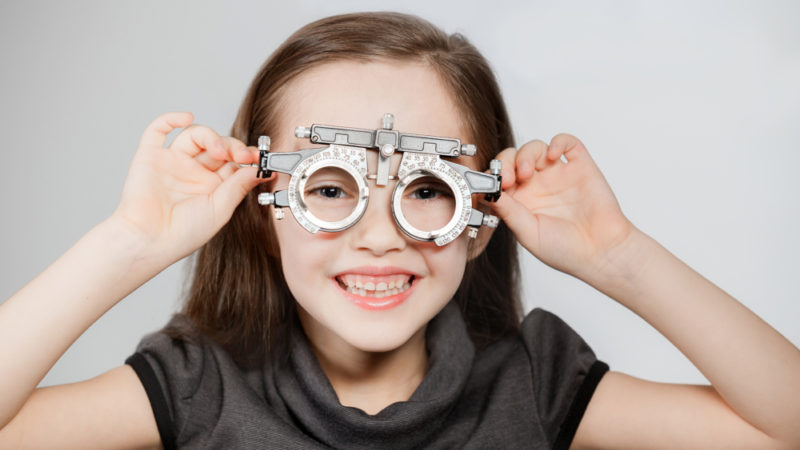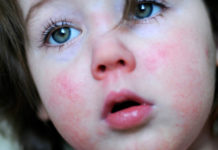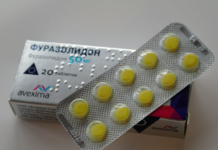Speaking of children's ophthalmic pathologies, they usually talk about myopia and farsightedness. But there is another kind of deviation, which we will talk about. This is astigmatism. Is treatment pathology amenable, and by what signs can astigmatism in children be suspected?
Material Content:
What is astigmatism in children
Experts do not attribute a pathological condition to the classic definition of a disease. Then what is it? Usually it is called a visual defect due to an unhealthy form of the cornea. As a result, the visual focus shifts, and the child, as it were, observes a distorted picture of the world.
However, there is a physiological norm of deviation of 0.5D. This level is found in many babies, but by about a year the value is aligned and does not affect the health of the eyes.
The pathology itself is hereditary. In advanced form, it can lead to strabismus and decreased vision.
Pathology classification
When vision is normal, the beams of light rays after refraction in the optical system of the eye do not intersect with each other. As a result, all objects are viewed quite clearly.
Deviation causes them to disperse with the formation of several foci. In this case, the tricks are not located on the desired axis, which leads to a distorted perception of visible images. The reason for this phenomenon is the altered shape of the eyes, in which the spherical cornea is elongated with an offset in any direction. Sometimes the defect affects the lens. Based on the localization of the disorder, astigmatism is divided into lens and corneal.
There is also a standard division of the disease into:
- complex view;
- simple form;
- mixed astigmatism.
The intensity of the deviation is determined on the basis of the difference between the weakest and strongest meridian and the strength of its refraction. Slight astigmatism can be observed in 25% of the world's inhabitants. This is the so-called physiological norm - up to 0.5 diopters. Such an indicator does not need correction and special treatment. If its value grows to at least 1 diopter, then they are already talking about a violation.
There is the following classification of the degree of disease:
- Strong - over 6 D;
- Medium - up to 6 D;
- Weak - does not exceed 3 D.
Depending on the change in refraction, there are:
- Simple myopic astigmatism.
- Myopic astigmatism is complex.
- Hypermetropic astigmatism is simple.
- Complex hyperopic astigmatism of both eyes in a child.
Causes of visual impairment
This deviation is due to a genetic predisposition. Somewhere up to 2 years it is completely undetectable. The child does not feel discomfort. His vision is considered normal. However, it is very important to notice the presence of a defect as early as possible. In this case, measures will be taken to relieve the eye strain, as a result of which complications can be avoided.
Astigmatism is not always congenital. Factors leading to this pathology also include injuries to the cornea or lens and surgery.
The main symptoms and signs
Deviation is easily determined by the following symptoms:
- Frequent headaches in the area of the eyebrows and forehead. This is explained by the need to constantly slightly tilt your head due to poor visibility.
- Regular complaints of poor eyesight without reference to the remoteness of the subject (distant can also be poorly visible, as well as close).
- Constant squinting eyes.
- Fatigue from visual stress.
- Difficulty concentrating on printed text.
Sometimes minor discomfort goes away with age. However, the presence of a serious pathology should be noticed in a timely manner and, if possible, corrected.
Diagnostics
Due to the difficulty in diagnosing astigmatism, doctors recommend regular ophthalmologist examinations at the age of:
- 4 months;
- 1 year
- 3 years
- 5 years;
- 6 years;
- further, with an interval of once every two years to 16 years.
It is very difficult to identify an ailment in children under one year old. Such kids still do not know how to speak and, accordingly, complain of malaise.
There are several methods for examining vision for possible defects:
- retinal biomicroscopy or diagnosis and vascular analysis;
- visometry - standard reception using the table;
- Skioscopy - characterization of the eye refractive type;
- ultrasound biometry, which helps to assess the state of structures and eye muscles;
- autorefractometry study of the cornea with the lens.
Effective treatments
The most exciting question: is astigmatism being treated or not?
If the defect was noticed at an early stage, then there is more chance of correcting it, or at least stop further changes. Therapy should be carried out under the constant supervision of the attending physician.
In childhood, a small degree of astigmatism can be corrected using the following measures:
- Massage.
- Taking medications.
- Proper nutrition. The inclusion in the daily diet of the baby foods rich in antioxidants, which contribute to the rapid regeneration of fiber, and also help her stay in tone.
- Regular gymnastics.
- Maintaining a healthy lifestyle.
These measures do not contribute to the complete elimination of the disease. But thanks to them, you can slow down the pathological process, while maintaining visual acuity.
If a defect is found, the specialist will prescribe special correction glasses with cylindrical glasses. You will have to wear them all the time. This is necessary to correct vision.Parents need to control and timely replace the optics as their children grow up.
There is also known a method of contact correction using computer technology.
Significant positive dynamics are noted with the regular execution of specially designed exercises for the eyes.
If you resort to these methods in combination, you can get a tangible result, significantly improving vision and getting rid of glasses.
In addition to corrective measures, a full-fledged treatment through surgical intervention is possible. The operation is permissible only after 20 years, when most body systems, including vision, are already formed.
Two main methods of surgical treatment are known:
- Keratotomy. The refraction of the rays along the strengthened axis is slightly attenuated due to the through notches on the cornea. A similar correction is carried out in the case of mixed astigmatism, as well as with myopia.
- Thermokeratocoagulation. The peripheral part of the cornea is cauterized by a heated metal needle. The refractive power in this case increases along with an increase in the curvature of the cornea. This operation is applicable for the treatment of farsighted astigmatism in children.
A method such as orthokeratology is quite effective. It involves the selection of hard lenses that must be worn before bedtime and left overnight. Under their pressure, the cornea is leveled, which helps treat astigmatism in a gentle way. In the morning they are removed.
Weak changes can be eliminated by laser correction. This procedure is available after 18 years.
It is important to keep in mind such contraindications:
- unstable vision;
- the presence of scars on the retina;
- inflammation of the eyes.
Only an expert can choose the best treatment method.
Possible consequences
In the absence of proper adjustment or untimely intervention, complications are likely. The defect itself does not develop.
However, it provokes the appearance of concomitant diseases:
- Amblyopia - the cells of the visual cortex stop in development, and the signal from the eyes is not processed in the brain.
- Asthenopia - decreased vision and increased eye fatigue.
- Strabismus.
Astigmatism can also lead to a lag in the development of binocular and stereoscopic vision.
Prevention
As a preventive measure, it is necessary to take care of the even distribution of the load throughout the day to avoid eye fatigue. It is useful to perform exercises aimed at relieving eye strain. It is also important to treat inflammatory pathologies in time and prevent damage to the cornea.
The child should be examined by an ophthalmologist based on the established plan. In the event of the slightest defect, the doctor will put it on record for continuous monitoring. This will help track changes and make the necessary adjustments when the time comes.
The treatment of astigmatism is a complex and multi-stage process. Its success largely depends on the time taken measures, the implementation of all medical prescriptions and the regularity of the prescribed procedures. Only with an integrated approach can we count on obtaining quick and long-term results.
















